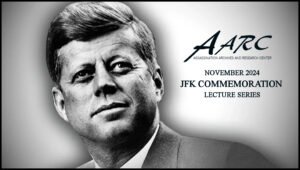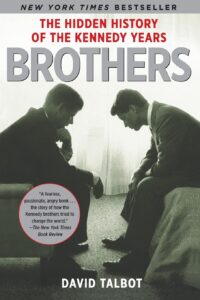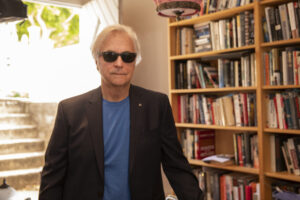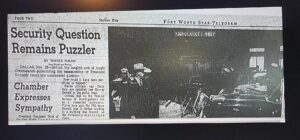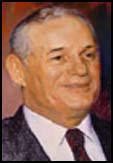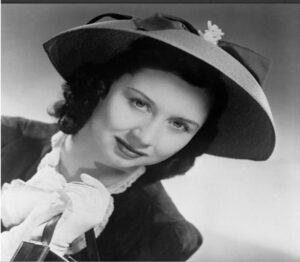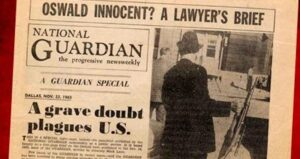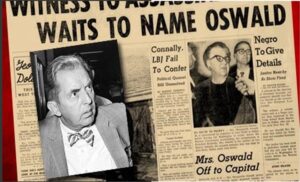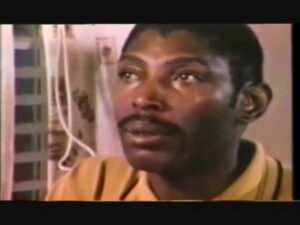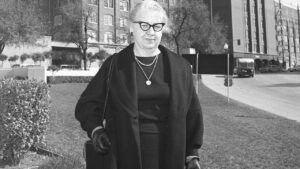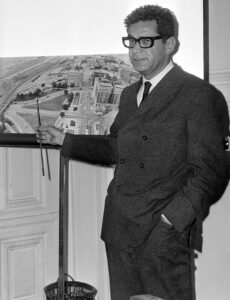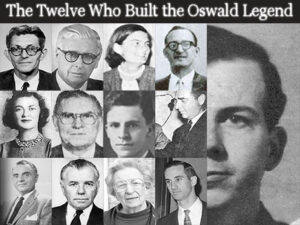Courtesy of Joe Backes
- Marc Caputo for AXIOS

The FBI just discovered about 2,400 records tied to President Kennedy’s assassination that were never provided to a board tasked with reviewing and disclosing the documents, Axios has learned.
- The still-secret records are contained in 14,000 pages of documents the FBI found in a review triggered by President Trump‘s Jan. 23 executive order demanding the release of all JFK assassination records.
Why it matters: The discovery — 61 years after Kennedy was killed in Dallas — follows decades of government reluctance to release all documents related to the assassination, which fueled a mountain of conspiracy theories.
- The existence of the new documents was disclosed Friday to the White House, when the Office of the Director of National Intelligence submitted its plan to disclose the assassination records under Trump’s order.
Zoom in: The contents of the newly found records are closely held secrets. The three sources who relayed their existence to Axios said they hadn’t seen the documents.
- But the discovery of thousands of records on one of the most scrutinized events in U.S. history is likely to raise questions about the procedures for vetting and releasing information across the entire government.
- “This is huge. It shows the FBI is taking this seriously,” said Jefferson Morley, an expert on the assassination and vice president of the nonpartisan Mary Ferrell Foundation, the nation’s largest source of online records of Kennedy’s killing. He sued the U.S. government for more records.
- “The FBI is finally saying, ‘Let’s respond to the president’s order,’ instead of keeping the secrecy going,” Morley said.
Reality check: The remaining records to be disclosed — as well as the newly discovered tranche of 2,400 reports — are unlikely to definitively prove whether Lee Harvey Oswald was the lone-wolf assassin or was part of a broader conspiracy, experts say.
Catch up quick: Under the 1992 JFK Records Act, assassination records were supposed to be handed over to the JFK Assassination Records Review Board and then to the National Archives. The archive maintains a collection of documents that were supposed to be fully disclosed in 2017.
- Administration officials determined these newly discovered records hadn’t been submitted to or vetted by the assassination review board or the National Archives.
- When Trump was president in 2017, he delayed disclosure of the records the government had identified, on the advice of the CIA. President Biden then ordered limited releases of records that still didn’t fully comply with the spirit of the JFK Records Act.
- Government secrecy advocates argued to Trump and Biden that full disclosure of the assassination documents could compromise “sources and methods” of intelligence gathering, and unfairly implicate officials involved in the controversy.
The big picture: Trump has regretted for years not releasing all the JFK records in his first term, according to those who have discussed the matter with him.
- During the 2024 campaign, Trump promised his supporters and Robert F. Kennedy Jr., the late president’s nephew, that he’d release the records on JFK’s assassination in 1963, as well as those related to the 1968 killing of Kennedy’s father, Robert F. Kennedy.
- RFK Jr., named by Trump to be Health and Human Services secretary, has called for full disclosure for years, and believes both assassinations were part of a broader conspiracy.
Trump’s order calls for a plan to release assassination records of RFK and the Rev. Martin Luther King Jr. by March 9.
- “PRESIDENT TRUMP IS ENDING THE ENDLESS DELAYS,” a White House fact sheet issued Jan. 23 says: “President Trump promised during his campaign to release assassination records to give Americans the truth.”
What’s next: Despite Trump’s order, sources say, the various intelligence agencies with records of the assassination are still recommending redactions.
- “When POTUS hears about this stonewalling, he’s gonna hit the roof,” a White House official told Axios.
- “This is total Deep State bulls**t,” said another.
- “Don’t be surprised if all these records just suddenly wind up online,” a Trump adviser said. “He wants to move on and call this a promise kept.”
The intrigue: The newly discovered FBI files could have relevance in the ongoing federal lawsuit filed by the Mary Ferrell Foundation against the Biden administration in 2022. It alleges federal agencies had more documents related to the assassination that they weren’t turning over to the National Archives. They include:
- Jailhouse recordings of mobster Carlos Marcello, who claimed he was involved in the assassination.
- CIA files of George Joannides. He was the chief of covert action at the CIA station in Miami and was a case officer for a New Orleans-based CIA-funded exile group that had a series of encounters with Oswald before the shooting. Joannides also was accused of misleading a House committee investigating the assassination by failing to disclose his ties to Oswald. “The Joannides file sounds exactly like the newly discovered FBI files,” Morley said. “It’s something assassination-related that was never turned over to the Archives.”
Read more at AXIOS


